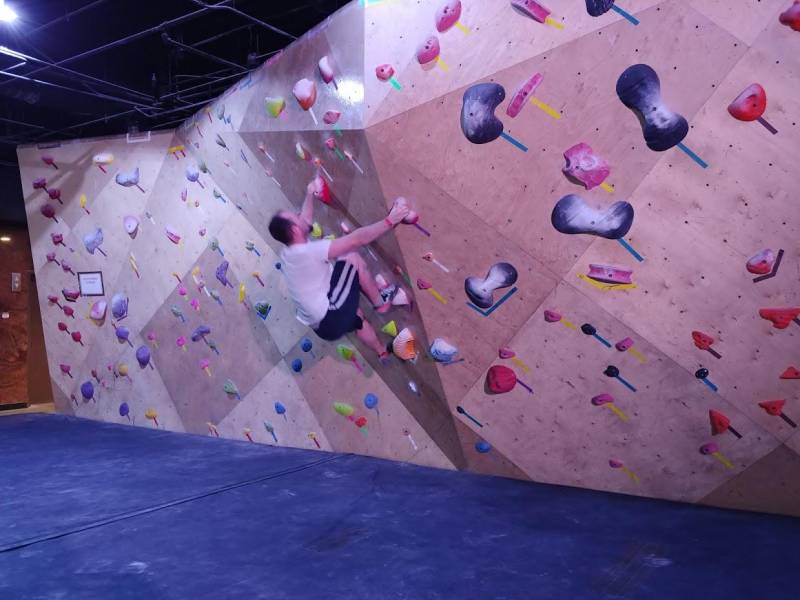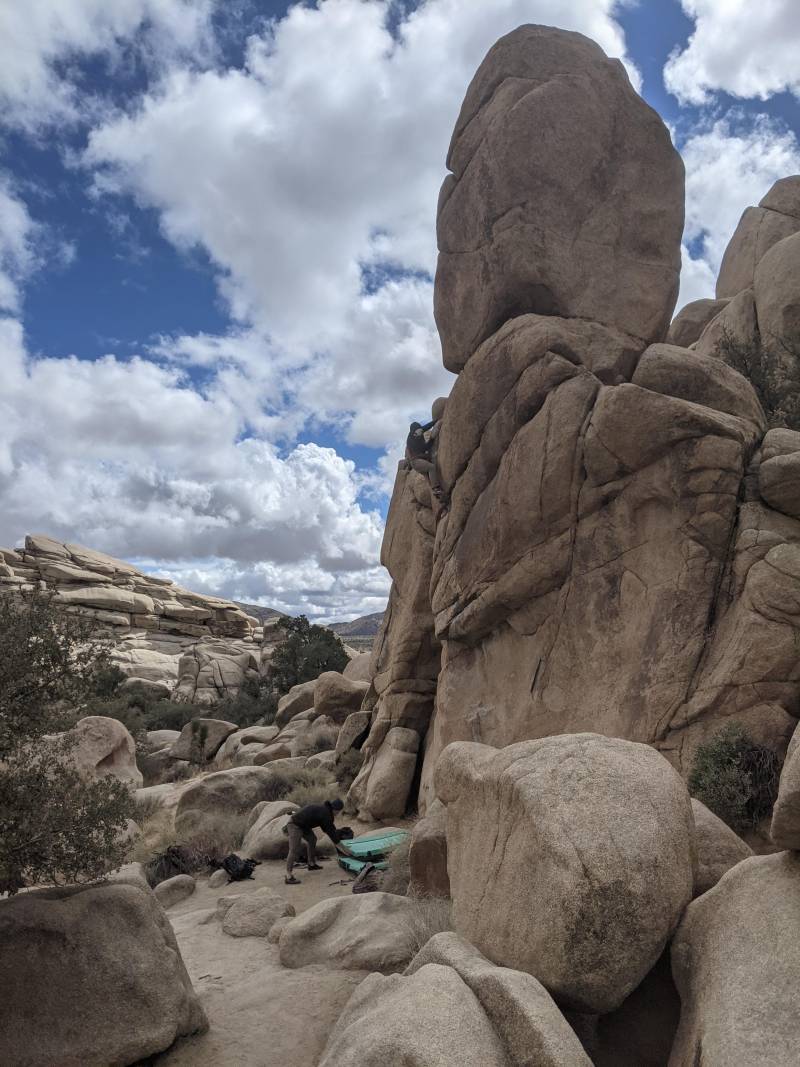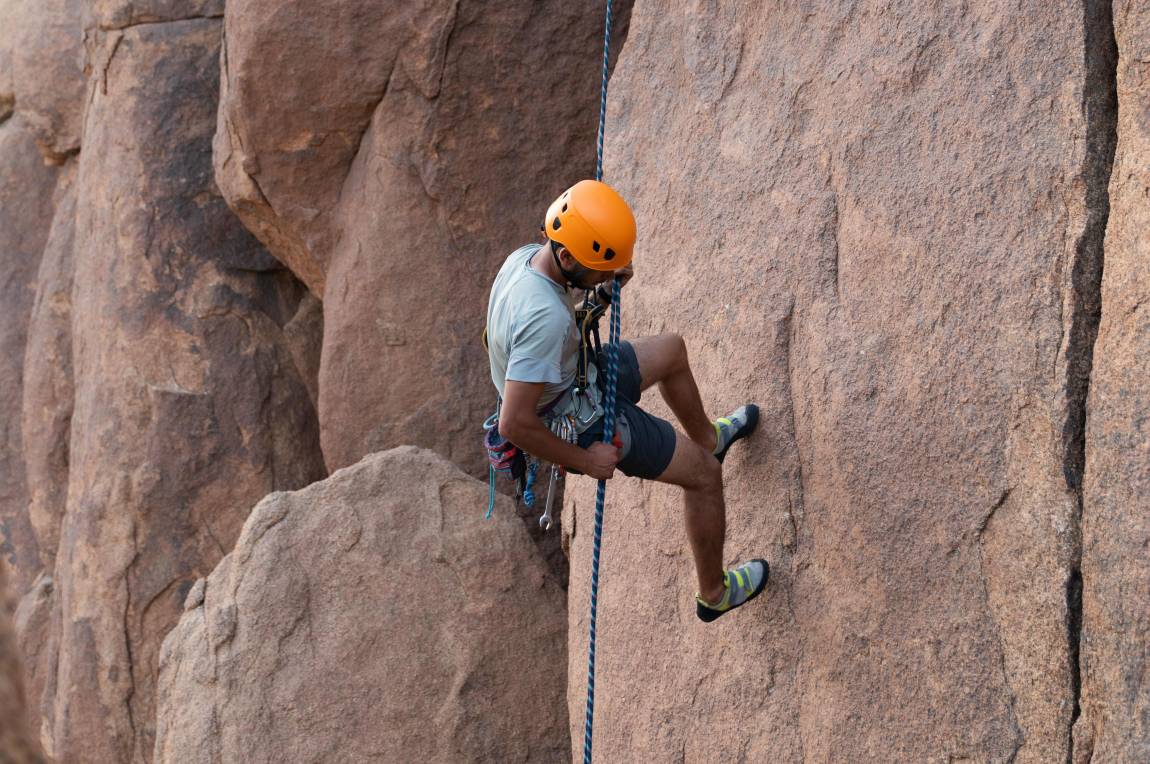You're intrigued, fascinated, and ready to conquer heights. You're about to embark on a thrilling journey into the world of rock climbing. As a beginner, it's crucial to understand the basics, from the physical demands to the mental tenacity required. Fear not, we're here to guide you through your first steps, from mastering the correct footwork to selecting the right gear to take those first few steps safely and securely.
Let's get you started on this exciting path with our 'Beginners Guide to Rock Climbing'. It's time to harness up, chalk up, and climb on. Remember, every pro climber started where you are now - at the beginning. Welcome to the climbing community, where the only way is up!
Key Takeaways
- Indoor climbing is a great way for beginners to train and learn the basics before venturing outdoors.
- Rock climbing requires specific gear such as climbing shoes, chalk bag, harness, carabiners, and ropes.
- Climbing grades indicate the difficulty of a route and can vary based on terrain and individual comfort levels.
- Proper techniques, footwork, and body positioning are essential for efficient and safe climbing.
Understanding Rock Climbing Basics
So, you're ready to dive into the exhilarating world of rock climbing, huh? Well, understanding the basics is your first step to conquering those rocky heights. Whether it's mastering different climbing techniques or getting to grips with the grading system, choosing the right climbing shoes for beginners is paramount. They'll be your lifeline, providing necessary grip on various types of climbing holds, each requiring a unique approach.
Remember, hand and finger strength is key to maintaining these holds, so don't neglect those workouts! Additionally, familiarizing yourself with basic climbing knots will ensure your safety on the rocks.
Lastly, improving balance and body positioning is crucial. It'll not only enhance your climbing efficiency but also ensure a more enjoyable experience.

Essential Gear and Equipment That You Need For Your First Climb
Choosing the right climbing shoes is a must. They provide the grip and precision needed to confidently ascend those tricky routes.
Climbing Shoes
Climbing shoes are arguably the most essential piece of equipment for a novice rock climber. These specialized shoes provide the grip necessary to safely and efficiently climb rock surfaces. When selecting climbing shoes, look for a comfortable yet snug fit. Your toes should gently curl but not be too cramped. It's also crucial to choose shoes designed for the specific type of climbing you intend to do. For example, beginners often opt for neutral shoes that are suitable for longer climbs.
Harness
A climbing harness is vital for safety during both indoor and outdoor climbing. The harness anchors you to your rope, catching you in case of a fall. A good climbing harness will have a comfortable fit around your waist and thighs and include gear loops to attach additional equipment. As a beginner, choose a harness that is adjustable, has gear loops, and is specifically designed for rock climbing.
Climbing Rope
Climbing ropes are key safety tools that bear your weight during a climb or a fall. Ropes vary in length, thickness, and type, including dynamic ropes (for lead climbing) and static ropes (for top-roping). Beginners usually start with top-roping, so a static rope would be the best choice. Ensure your rope is long enough for your climbing routes and is UIAA (International Climbing and Mountaineering Federation) certified for safety.
Helmet
A climbing helmet is crucial for protecting your head from falling debris or in case of a fall. Look for helmets that are both lightweight and durable with good ventilation. It should fit snugly but not too tight, and it should stay in place even when you move your head around. Check that the helmet you choose meets safety standards such as those set by the UIAA or the European Standard (EN).
Belay Device
A belay device is used to control a rope during belaying, helping you safely ascend or descend a climb. There are many types of belay devices, but for beginners, an assisted-braking device is often recommended because it locks down on the rope automatically when a sudden force is applied. This adds an extra level of safety.
Carabiners
Carabiners are metal loops with spring-loaded gates used to connect components quickly and reversibly in safety-critical systems. They come in different shapes, sizes, and types, including locking and non-locking carabiners. As a beginner, you'll mainly need locking carabiners for belaying and setting up top-rope anchors.
Chalk and Chalk Bag
Climbing chalk is used to keep your hands dry for a better grip on the rock. It is typically stored in a chalk bag that hangs from your harness. Look for chalk that is specifically made for rock climbing, and choose a chalk bag that can be easily opened and closed with one hand.
Every novice rock climber should equip themselves with these essentials before embarking on their climbing journey. As you progress, your equipment may change or evolve to suit your style and preferences, but these basic items will form the backbone of your climbing gear.
Learn The Grading System and Techniques
Understanding the grading system and mastering climbing techniques can seem like a steep uphill task, but they're essential to navigating those exhilarating ascents and descents with confidence.
There are several grading systems in rock climbing, used worldwide, each with its unique style of rating the difficulty of a route. Two of the most commonly used systems, especially for a beginner climber, are the Yosemite Decimal System (YDS) in the United States and the French Grading system in Europe.
Yosemite Decimal System (YDS)
The Yosemite Decimal System (YDS) originates from the USA and consists of three parts: the class, the grade, and the protection rating. The class ranges from 1 to 6, with classes 1 and 2 referring to hiking, class 3 to scrambling, class 4 to simple climbing, and class 5 to technical rock climbing. Class 6 refers to aid climbing, which is beyond the scope of most beginners.
For beginners, the focus is typically on class 5. The grade further specifies the difficulty within class 5, running from 5.0 (easiest) to 5.15 (most difficult). The grades from 5.10 and above are subdivided with a letter a, b, c, or d (for example, 5.10a, 5.10b, 5.10c, 5.10d). As a novice, it's suggested to start with climbs rated 5.5 to 5.8.
French Grading System
The French grading system uses numbers followed by a, b, or c, and '+' to indicate difficulty. For example, 6a+ is harder than 6a. As the system is open-ended, the current hardest routes are being graded at 9c.
The French grading system takes into account the overall difficulty of the route, including the technical difficulty, the endurance required, the strength required, the difficulty of the single hardest move, and the ability to rest. This system is used globally, especially for sport climbing routes.
For beginners, you might want to look for routes in the range of 3 - 5.
As a novice climber, familiarizing yourself with these grading systems can guide you to select the appropriate climbing routes that match your current skill level. Always remember, safety comes first, and it's perfectly okay to start with easier climbs and gradually push your comfort zone as your skills and confidence improve.
Remember, every climb brings you one step closer to mastery. Stay patient, stay persistent!
Rock Climbing Safety Precautions and Tips
Embrace the thrill of the climb, but never forget that your safety is paramount. Let's delve into some crucial precautions and tips to ensure you're well-prepared for every adventure.
- Always prioritize wearing a climbing helmet. Its importance cannot be overstated as it shields you from potential falls and falling debris.
- Effective communication with your climbing partner is equally critical. Check each other's gear and discuss climbing strategies to ensure a smooth and safe ascent.
- Regularly inspect your equipment for signs of wear and tear. Remember, your life literally hangs on its reliability.
- Implement risk management practices by being aware of environmental hazards and climbing within your abilities.
- Lastly, learn from common beginner mistakes. Overgripping and neglecting warm-ups can lead to accidents. Enhance your safety and climbing experience by avoiding these errors.

Ideal Climbing Locations For Beginners
Sure, you might start off conquering the artificial hills at your local gym, but isn't it ironic that the real joy of this sport lies in grappling with Mother Nature's own challenges? Indoor climbing is beneficial as it helps you gain strength, understand basic techniques, and overcome that nagging fear of heights. But when you're ready for the real deal, finding the right location is key. Look for beginner-friendly crags and don't hesitate to ask for tips from more experienced climbers.
Top Outdoor Rock Climbing Locations For Beginners
Beginners should look for climbing locations that offer routes suitable for their skill levels and the type of climbing they want to practice. Below are several locations worldwide that are ideal for beginner rock climbers:
Joshua Tree National Park, California, USA
Joshua Tree National Park is a mecca for rock climbers due to its variety of routes and the beauty of the desert setting. For beginners, Joshua Tree offers numerous lower-grade traditional climbs and bouldering opportunities. Always make sure to have an experienced climber or guide with you if you're new to traditional climbing.
The Gunks, New York, USA
The Gunks, or the Shawangunk Mountains, is one of the premier climbing areas in the US. This location is great for beginners because of the abundance of top-rope and low-grade routes. The rock is a type of quartz conglomerate, making it extremely durable and providing plenty of good hand and footholds.
Smith Rock, Oregon, USA
Smith Rock, often considered the birthplace of modern American sport climbing, offers a wide range of routes for beginners to advanced climbers. With over a thousand routes to choose from, new climbers can start on lower-grade routes and gradually challenge themselves as their skills improve. The rock is mainly volcanic tuff and basalt, offering unique climbing conditions.
Red River Gorge, Kentucky, USA
Known for its incredible sandstone cliffs, Red River Gorge offers a variety of climbing routes suitable for all levels, including beginners. Its numerous well-bolted sport routes and easily accessible crags make it a popular choice for novice climbers.
Yosemite Valley, California, USA
While Yosemite is famous for big wall climbs like El Capitan, it also has a lot of routes suitable for beginners. Schools like Yosemite Mountaineering School and Guide Service offer guided climbs and lessons, which can be an excellent way for beginners to experience climbing in this iconic location.
Skaha Bluffs, British Columbia, Canada
Located in Penticton, Skaha Bluffs is one of the best rock climbing locations in Canada. It offers more than a thousand climbing routes across a wide range of difficulties. The majority of routes are sport climbs, making it ideal for beginners. The crags are well-maintained, and the approach trails are clearly marked.
Banff National Park, Alberta, Canada
Banff National Park offers a variety of climbing opportunities, including sport climbing, trad climbing, and bouldering. The park provides guided climbing adventures, which are perfect for beginners. Some recommended beginner-friendly areas within Banff include Lake Louise and Tunnel Mountain.
Cape Enrage, New Brunswick, Canada
Cape Enrage offers some of the best maritime climbing in Canada on its rugged sea cliffs. For beginners, there's the added bonus of an adventure company on-site that offers guided climbing experiences. This allows you to safely learn and enjoy climbing while taking in the beautiful coastal views.
Finding a climbing partner who shares your enthusiasm and commitment is equally important. Together, you can take on the great outdoors and experience the true essence of rock climbing.
Maintaining Climbing Etiquette and Responsibility
As you venture out on this exhilarating journey, it's paramount to remember that you're not just a climber, but also a guardian of the environment.
- Leave No Trace: This principle extends beyond packing out your trash. Be gentle with vegetation, avoid disturbing wildlife, and tread lightly on the trails.
- Communication with Climbing Partners: It's more than just safety checks and climbing commands. Share your knowledge and passion for environmental conservation, and inspire others to do the same.
- Supporting Local Climbing Organizations: They often champion conservation efforts; your support helps preserve our beloved climbing spaces.
Remember, your proper warm-up routines are as crucial as your commitment to protecting the environment. You're now part of a community, and we're counting on you.
Conclusion
Rock climbing is a thrilling journey up nature's skyscrapers. It's a sport that challenges both your body and mind, like a life-sized puzzle waiting to be solved.
Remember, safety always comes first, and learning the ropes (literally) is key.
As you tackle new heights, respect for the environment and fellow climbers is paramount.
So grab your gear, step into your harness, and start your exciting ascent into the exhilarating world of rock climbing.
